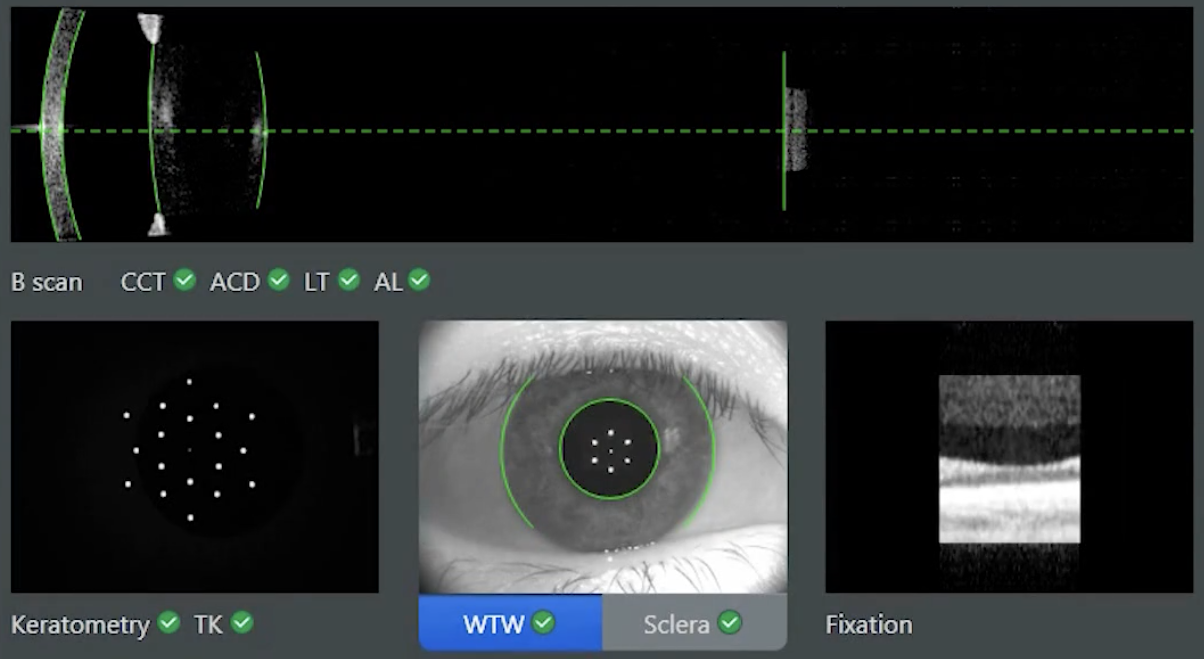 |
|
Diurnal rhythms in ocular biometry appear to be synchronized with melatonin secretion in both winter and summer. Photo: Carl Zeiss Meditec. Click image to enlarge. |
Experimental studies involving animals have shown that disruptions of ocular diurnal rhythms are implicated in accelerated ocular growth, supporting daylight as the behavioral factor reported to have the strongest protective role against accelerated ocular growth. In a recent study, researchers investigated the diurnal rhythms of melatonin secretion and ocular structures.
Eight measures (epochs) of intraocular pressure, ocular biometry and OCT were obtained from participants between 17 and 24 years old mid-winter (n=35; six hours of daylight at solstice) and one day the following summer (n=24; 18 hours of daylight at solstice). Participants wore an activity monitor seven days before measurements were taken, and saliva was collected for melatonin. The epochs were scheduled relative to the individual’s habitual wake and sleep time: two in the day (morning and midday) and six in the evening (every hour until and one hour after sleep time). A linear mixed-effects model was used to determine significant diurnal variations and estimate rhythmic statistics.
The study reported significant seasonal variation in the diurnal rhythms of melatonin and axial length (AL). “These rhythms appear to be synchronized in both winter and summer, suggesting that the overall rhythm of the eye expressed through ocular AL is synchronized with the master circadian clock, as measured by saliva melatonin secretion,” the authors explained in their paper for Ophthalmology Science. “Additionally, the direction and degree of AL change were significantly associated with the degree of AL phase advance in the summer, alluding to between-individual variation of the eye in adaptation to seasonal changes in diurnal rhythms (at least at latitudes where there are notable seasonal changes in daylight exposure).”
Twenty-two of 24 participants showed an AL change that was larger than the reported repeatability limit in the seven months between the measurements in winter and summer. “Interestingly, eyes that were measured to be shorter had a larger phase-advance of AL and a thickening of the choroid, while the opposite was observed in eyes that were measured to be longer,” the authors noted.
The finding that the crystalline lens and anterior chamber underwent significant in-phase diurnal variations, both increasing in size in the evening, renews interest in the role that time-of-day exposure of near-distance activities may play in eye growth. “It indicates that other behavioral modifications, in combination with daylight exposure, may contribute to delayed myopia onset and development,” the authors concluded.
Nilsen NG, Gilson SJ, Pedersen HR, et al. Seasonal variation in diurnal rhythms of the human eye: implications for continuing ocular growth in adolescents and young adults. Invest Ophthalmol Vis Sci. 2022;63(11):20. |


